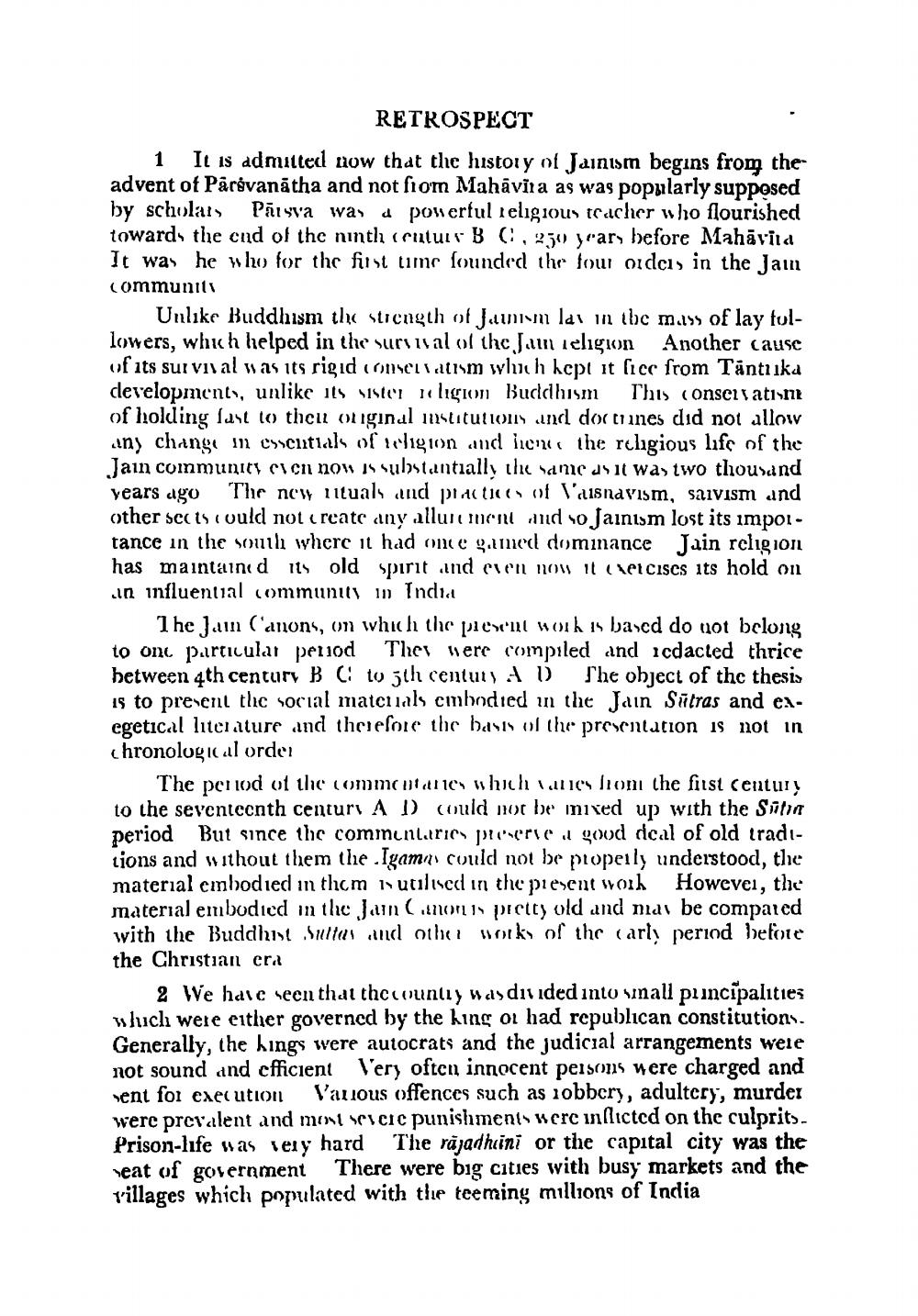________________
RETROSPECT 1 It is admitted now that the history of Jainism begins from the advent of Pārsvanātha and not from Mahāvia as was popularly supposed by scholars Pārsva was a powerful religious teacher who flourished towards the end of the ninth centur B (, 256 yrars before Mahāvila It was he who for the first time founded the four orders in the Jam communiti
Unlike Buddhism tha stiength of Jaunumlar in tbc miss of lay tullowers, which helped in the survival of thc Jam Teligion Another cause of its survival was its rigid conscnaim wluch hcpt it rice from Tantrika developments, unlike it's sister sligion Buddhism This conscivatism of holding last to the original institutions and doctrines did not allow
ny change in essentials of religion and here the religious life of the Jain community cien now is substantially the same as it was two thousand years ago The new rituals and practice of Vaisnavism, saivism and other scats evuld not create any allurauen und so Jainism lost its importance in the south where it had once gamed dominance Jain religion has maintained its old spirit and even now it cleicises its hold on un influential community in India
The Jain (anons, on which the present work is based do not belong to ont particular period Thet were compiled and icdacted thrice between 4th century BC to 5th centuty AD) The object of the thesis is to prevent the social materials embodied in the Jain Sūtras and excgetical literature and therefore the basis of the presentation is not in Chronological order
The period of the commoutanc wuch des Trom the first Century to the seventeenth century AD would not be mixed up with the Sütin period But since the communlaric preserved good dical of old tradicions and without them the Igamni could not be properly understood, the material embodied in thcm is utilised in the present work However, the material embodied in the Jain (monis pretty old and may be compared with the Buddhist Sultas and other works of the early period before the Christian era
2 We have seen that the country was divided into small principalities which were either governed by the king or had republican constitutions. Generally, the hings were autocrats and the judicial arrangements were not sound and cfficient Very often innocent persons were charged and Yent for execution Various offences such as robbery, adultcry, murder were prevalent and most icic punishments were inflicted on the culprits. Prison-life was very hard The rajadhini or the capital city was the Yeat of government There were big cities with busy markets and the villages which populated with the teeming millions of India




